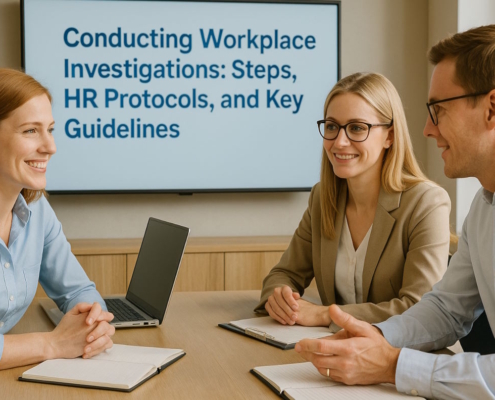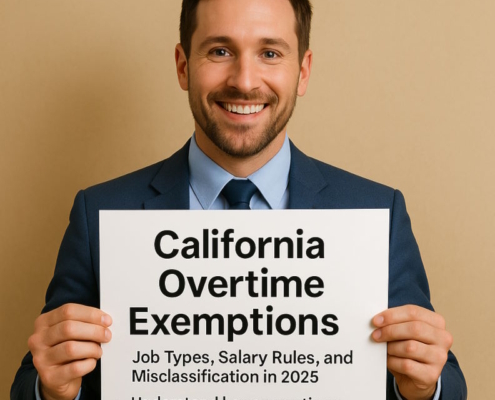Why is people management important?
Gaining proficiency in people management is crucial to retaining staff, sustaining engagement and productivity, and improving business performance. However, 50% of workers have departed to avoid their manager, while 69% of managers frequently find it difficult to interact with staff members and provide performance reviews. This implies that there is frequently a lack of people management in businesses.
Let’s examine people management’s definition and importance, its challenges, and the most important people management competencies for HR specialists as well as people managers.
Leading, developing, inspiring, and managing staff on a daily basis to achieve the organization’s mission and overarching goals is the focus of people management. All functions related to people, including hiring, onboarding, development and training, management of performance, staff engagement, and pay and benefits, fall under the umbrella of people management responsibilities.
Line managers are often in charge of personnel management within their divisions, with support and advice from the HR division. HR specialists collaborate with team managers to support employees by giving them guidance and feedback so they may achieve their career objectives and collaborate well with the team.
Since people are the foundation of any company, efficient people management is essential. Here are a few ways that having effective people management abilities can help both your company and its staff.
- Employee retention: As we’ve already discussed, research indicates that people quit bad managers, not the company or the job. On the other hand, individuals never forget a genuinely exceptional boss who made them feel valued, was a pleasure to work with, and assisted them in achieving their objectives. Retaining top personnel is more likely when you have effective people managers in place.
- Increasing productivity, participation, and performance: Workers are far more likely to be involved at work and give their best efforts when they are treated with respect and feel appreciated, when their efforts are acknowledged and rewarded, and when they know their place in the company and how to advance in their careers.
- Establishing a helpful and upbeat work atmosphere: Employees that feel supported at work are more likely to be satisfied, enthusiastic, and have an upbeat outlook at work when effective people management is in place. That makes everyone’s work environment more positive.
- Resolution of conflicts: HR and managers can speak candidly and openly with staff members when they possess people management skills. In order to lessen dysfunctional conflict at work, team managers and HR specialists can successfully manage conflict and deal with any issues as soon as they arise.
- Skill development: Effective managers support their staff members’ professional growth and provide them the tools and self-assurance they need to achieve both their professional and personal goals, which benefits the company as a whole.
- More productive teamwork: Leaders that possess excellent people management abilities are more effective at leading their teams, achieving goals, and cultivating a motivated and cooperative team atmosphere.
- Improving performance in business: Fulfilling the organization’s objectives and mission is the ultimate goal of people management. Effective management gives individuals the tools they need to fulfill their responsibilities and advance these objectives.
Challenges in people management
HR and managers have a distinct set of difficulties when it comes to people management, the main one being the tension between trying to achieve corporate goals and speaking out for employees. Let’s take a closer look at a few of the typical problems.
- Insufficient people management abilities: One of the biggest problems with people management is the inability to support, encourage, and bring out the best in others in the workplace. Managers often want better interactions with their staff but don’t have the necessary skills.
- Lack of transparency and consistency in people management: The absence of clear guidelines makes it difficult for people managers to be consistent. This leads to inconsistent personnel management. Also, there is a shortage of knowledge about how to resolve conflicts and deal with subpar work. Because of this, a lot of managers avoid talking about it and are not forthright and honest with their staff.
- Communication problems: Although managers and their teams naturally have a distance from one another, ineffective communication will arise if they are unable to develop the necessary abilities to close this gap. Workers will experience a lack of respect and listening. Both company operations and team morale may suffer as a result of this. Workers must be informed of their progress and any business changes that may impact them, have an open channel of communication with their supervisors, and know what is expected of them.
- A further difficulty in people management is striking a balance between the needs of each individual worker, the team as a whole, and the larger company. Every employee will operate in slightly different ways and have somewhat distinct personalities, communication methods, and goals. Effective supervisors have the ability to relate to individuals from a wide range of backgrounds, meet their needs, and give them more freedom to contribute to the objectives of the company.
- Managing change: When someone is promoted, leaves the organization for a new position, is laid off, switches teams, joins a new team, or creates a new department, employees frequently learn about these developments last. However, managers might not be fully informed until department heads or company executives have made the final call, and they might not even know the whole story. However, managers create uncertainty and mistrust among their workforce when they suppress this information.
Essential elements of a successful people management plan
The cornerstone of successful people management methods is the five Cs. These are Context, Consistency, Courage, Commitment, and Clarity.
Let’s take a closer look at each of these and see how they might support you in overcoming obstacles and realizing your people management strategy goals.
- Clarity
Giving people precise instructions that help them understand what has to be done, how to do it, and why it is important is the foundation of people management. Lack of clarity resulting from poor communication harms the manager-employee relationship. Furthermore, it promotes disengagement.
Employees are more inclined to be engaged and productive at work when they understand what is expected of them and how their function fits into the organization’s larger aims. This promotes performance and aids in staff retention.
- Context
Every scenario and circumstance should be considered in the perspective of the larger picture while managing people. For instance, in place of giving a formal warning or, worse, demoting a top employee who suddenly appears disengaged from work and is missing deadlines, a manager who has excellent people management skills would have a private conversation with the employee to find out how they are doing and whether they need any assistance.
A new hire entering the team or someone switching teams are two more examples. A manager who is aware of the subtleties of the situation may choose to break the news first to those who are immediately impacted by it, and then, a little later, to those who are not directly impacted by the change on a daily basis.
When performing an investigation as part of a grievance procedure, for example, context is also crucial. A thorough examination considers both the facts and the situation’s context because nothing occurs in a vacuum.
- Consistency
In addition to addressing conflicts at work and other matters, there are other situations in which maintaining consistency is important. For instance, performance reviews ought to occur on schedule, on a regular basis, and according to the same protocol. It is important to provide equal opportunities for all employees to grow professionally and learn new things.
Maintaining consistency in personnel procedures fosters a transparent work environment, increases employee morale, and lessens any sense of prejudice or favoritism.
- Courage
Sitting down with an employee and telling them that they have to make some changes might be difficult. Informing someone that their behavior is unacceptable can sometimes cause them to feel uncomfortable and uneasy. Managers who are not well-trained and skilled frequently dread these discussions.
Employee supervisors are also responsible for selecting candidates for promotions, labeling those who “fails to meet expectations,” and occasionally firing underperforming staff members. HR and managers have a duty to the organization and the other employees, even though it might seem nice to overlook the shortcomings and defects of their staff. The courage to follow the proper course of action is essential to any successful people management plan.
- Commitment
Effective management takes time to develop. It needs patience, perseverance, training, and guidance. Effective people management is an ongoing endeavor that starts with the hiring process and concludes only when an employee leaves the company.
Building an engaged, cooperative team and a healthy work environment where everybody plays their part in accomplishing important goals requires commitment to both the organization’s mission and its personnel.
Ten best practices for people management
To effectively lead their teams, line managers must acquire people management abilities. These abilities are also necessary for HR professionals to mentor the managers in their organization and develop become subject matter specialists in people management.
The following are the most significant people management abilities, listed in no particular order.
- Performance-based management
Managing by performance involves focusing on results and output. Put differently, it prioritizes the accomplishments over the number of hours worked or the actual presence in a workplace. In real life, what does that mean?
As the pandemic struck, everyone who could started working from home. This made managers learn how to evaluate an employee’s success based on their output rather than their in-person interactions and contact hours.
Setting clear performance metrics with employees in collaboration with management and HR is essential because it creates a transparent framework for understanding accomplishments and potential growth areas. In the end, this gives people the freedom to direct their own professional development.
- Planning
Even though things are changing so quickly, managers and HR must plan for a variety of scenarios when it comes to people management.
Planning is a crucial ability for maintaining organization, making sure staff members can prioritize and manage their task, and handling any changes to the structure or operations that may arise.
- Instruction
The majority of workers want to advance in their careers, therefore they will value a manager who takes the time to guide them, support them, and enable them to achieve their goals.
Employee engagement and retention are increased when they form a coaching relationship with their supervisor or another employee in the company.
- Solving problems
Among the top ten in-demand skills is the ability to solve complex problems. The pandemic served as an uncommon but vital illustration of how companies must be able to think creatively and find solutions for a wide range of unforeseen issues. People had to pick up new skills like working from home, rearranging production floors, wearing face masks, and adhering to constantly evolving government health laws.
Problem-solving is a critical ability in people management, even in more sedate times. In addition to resolving issues with projects, you also need to collaborate with staff members to find answers.
- Communication
Effective communication is a prerequisite for effective people management. Building trust and solid relationships with all employees requires having an honest and open line of communication. Employees that work in such an atmosphere are aware of their responsibilities and are prepared to go above and beyond in order to finish tasks, close deals, and reach objectives.
- Provide feedback
Giving feedback is a necessary part of good people management, whether it takes the form of addressing subpar work or recognizing a job well done.
If a management lets a worker keep making the same error, it can have a detrimental effect on the entire company and irritate other workers. However, 37% of managers find it difficult to provide direct criticism to a team member for fear of a negative reaction.
On the flip side, workers will feel underappreciated if a boss fails to acknowledge their achievements. This frequently forces people to search elsewhere for new opportunities. Accurate, considerate, and timely feedback is a must for effective team leaders.
- Getting feedback
Being willing to actively listen to staff members and accept feedback and helpful criticism is another aspect of good people management.
Feedback should constantly be given and received in both directions. An effective people manager is one who is willing to learn and adapt new techniques for leading that evoke positive responses from those they manage. People of different ages and learning styles, for example, are more likely to value diverse modes of communication.
- Creativity
In addition to the previously listed problem-solving techniques, creativity also involves new product development, feedback facilitation, and solution seeking.
Effective people managers will never stop coming up with original answers to problems they encounter at work. They will also be receptive to fresh suggestions from their staff and unafraid to try out novel approaches to managing personnel.
- Grasping the role of stakeholders
Gaining an understanding of the stakeholders helps to focus team efforts on areas that will have the most impact. It entails appreciating their respective positions, spheres of influence, and priorities while keeping everyone’s needs and expectations in mind.
With this ability, managers may make sure that both their own and their staff members’ efforts are in line with the overarching objectives of the company. Additionally, it lessens the chance of misunderstandings or confrontations.
- Emotional intelligence
An emotionally intelligent people manager is perceptive and picks up on nonverbal clues that others might overlook. Prioritizing work-life balance and employee well-being while keeping an eye on how employees are performing at work are key components of effective people management. It involves looking past the surface and showing a sincere concern for other people’s well-being.
A person possessing emotional intelligence is also aware of their own limitations and actively seeks to improve them.
Final Thoughts
A great personnel management strategy must include effective people management since it is critical to your employees’ participation, retention, and growth as professionals.
Human resources is important in helping those who are busy overseeing employees on a daily basis and, consequently, the success of the business, by offering advice, direction, and training. This is because they should be the experts on the people side of the organization.































